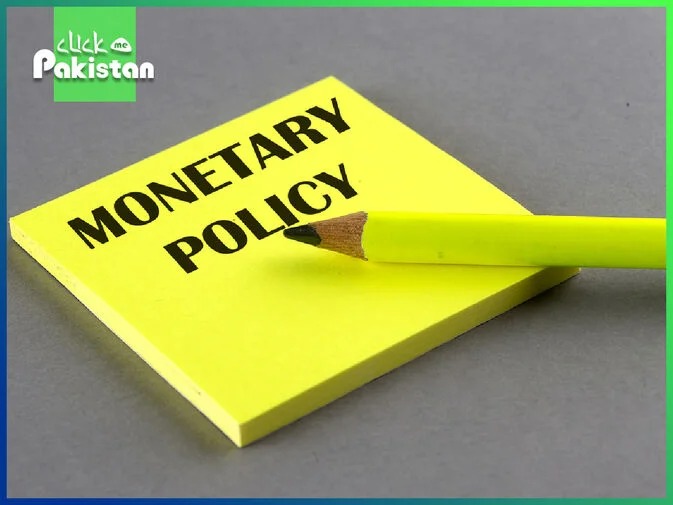One of the most important attributions affecting the overall economy of any country is the monetary policy. In Pakistan, the State Bank of Pakistan (SBP) plays the core role of formulating and implementing the Monetary policy to achieve these objectives and thus ensure the creation of macro-economic stability, the attainment of low inflation rates, as well as the promotion of economic growth. This blog post covers an introduction to the monetary policy in Pakistan, the goals of the policy, the instruments of it and the problems it has.
What is Monetary Policy In Pakistan?
Monetary policy therefore relates to how the monetary institution such as the central bank engages in the manipulation of both money stock and interest rates to achieve set objectives. In Pakistan, the primary objectives of monetary policy are to: In Pakistan, the primary objectives of monetary policy are to
- Control Inflation: Monetary policy in Pakistan, in particular, achieves the control of inflation to maintain the purchasing power of money.
- Promote Economic Growth: Monetary policy in Pakistan also guarantees that the pace of economic growth does not rise to the level which will cause inflation to soar.
- Stabilize the Currency: Forex stability and exchange rate stability of Pakistani Rupee (PKR) against the other major currencies.
- Manage Employment Levels: Accomplishing job generation and minimizing the unemployment rates.
The Current Monetary Policy in Pakistan and Instruments Used
The SBP utilizes several tools to influence the economy: The SBP utilizes several tools to influence the economy:
- Policy Rate: The SBP decides upon the policy rate that determines the rates of borrowing and lending in the economic system. It is used in adjusting this rate which in turn seasons inflation and managing of economic growth.
- Discount Rate: This is the interest rate at which commercial banks borrow funds from the central bank. Fluctuations in the discount rate mobilise money and active commercial circulation within the economy.
- Open Market Operations (OMOs)
It is worth explaining that OMOs refer to the operations with government securities on the securities market. Through securities, the SBP CAN provide or mop up liquidity by buying and selling these securities affecting the liquidity as well as the rates of interest.
Reserve Requirements
It is the SBP that prescribes minimum requirements of reserves that are to be maintained by commercial banks against deposits. Actual changes in reserve requirements can either increase or decrease those funds available for lending to banks and therefore affect the level of economic activity.
Exchange Rate Policy
The monetary policy in Pakistan and authority in Pakistan also known as the State Bank of Pakistan may also interfere with the foreign exchange market to support or even set the PKR. Exchange rate policies assist in controlling the balances of trade as well as the rates of inflation.
Recent Trends and Developments
Since the early 2000s, Pakistan has experienced some economic instability factors like; Inflation, fiscal deficits, and external debts. The SBP has implemented several measures to address these issues: The SBP has implemented several measures to address these issues:
- Inflation Control: The SBP has periodically revised its interest rates for the control of inflation which has been a lingering vice occasioned by factors such as the global increased cost of commodities and the belts of domestic/unfledged supply chain immoralities.
- Economic Stimulus: In the past, SBP has adopted an accommodative monetary policy for stimulating growth for instance lowering the interest rates and doing more in the provision of liquidity to firms during periods of economic downturn.
- Exchange Rate Management: That is why, from time to time, when the PKR experienced some volatility, the SBP tried to stabilize the currency and dealt with the pressures of external obligations.
- Financial Inclusion: Another important area, where the SBP acted as a catalyst, was the improvement of the population’s financial literacy, the encouragement of innovative financial products such as banking through mobile devices, as well as the facilitation of credit accessibility for the segments of the population, which were previously underserved by the traditional banks.
Challenges Facing Monetary Policy in Pakistan
- External Shocks: Foreign factors like variations in oil prices, the Bradford factor, and others which affect countries’ exports and imports have a direct influence on the effectiveness of their monetary policies.
- Fiscal-Monetary Policy Coordination: It can be particularly difficult when the institution handling monetary policy is not in sync with the fiscal policy institution to achieve harmonization on the right measures to undertake in the country’s management. Therefore, monetary policy in Pakistan.
- Debt Levels: Because of the constraints of high levels of public and external debt, the flexibility of the SBP in implementing monetary policy may be restricted.
Conclusion
Monetary policy in Pakistan is one of the most critical elements for controlling the state of the economy and development in Pakistan. Realizing its goals, instruments and most current occurrences offers an understanding of how monetary policy influences the economy at large.
Read Also For More: Model Concession Agreement: Benefits And Real-World Applications









